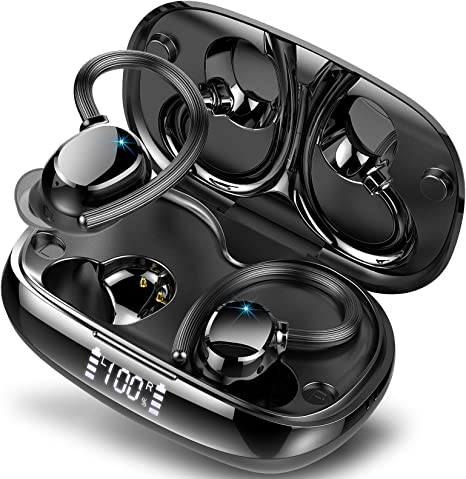How to Control a 3000W Fog Machine: A Mentor's Guide to DMX, Timers, and Remotes
Update on Nov. 3, 2025, 8:52 a.m.
Let’s be honest. You’re not here looking for a little $50 party toy that produces a weak puff of smoke. You’re here because you need power.
You’re a serious Halloween haunter, a mobile DJ, or a theater tech. You’ve seen reviews for 3000-watt machines and read the all-caps exclamations: “HOLY FOG!” “This thing is a BEAST!” “It will fog your whole street!” “My 3-car garage had ZERO visibility in 60 seconds.”
You’re looking for a machine that delivers a “whiteout condition.”
A 3000W machine, with a monstrous output like 50,000 Cubic Feet per Minute (CFM), is a professional tool. But with that great power comes a critical question: how do you control it?
This is what separates the amateurs from the pros. It’s not about making fog; it’s about making fog at the right time and in the right amount. As your mentor, let’s walk through the science of this power and the three levels of control you need to master.
The Science: How This “Beast” Actually Works
First, this isn’t “smoke.” A modern thermal fogger, like the XWSTGEQ XF-09/3000W, doesn’t burn anything. It’s a high-powered vaporizer.
- The “Engine” (3000W Heater): This is the heart of the machine. A 3000-watt heating element flash-heats a metal block in just 3-4 minutes. This immense power is what allows it to vaporize fluid instantly, creating a massive 26-33 foot plume of fog.
- The “Fuel” (Fog Fluid): The liquid you use is typically a water-based solution of food-grade glycol or glycerin. It’s not smoke from combustion; it’s an aerosol.
- The “Exhaust” (Atomization): A high-pressure pump forces the fluid through the heated block, where it instantly turns into vapor. As this hot, dry vapor hits the cooler, ambient air, it condenses into billions of microscopic droplets. This is the dense, opaque fog you see.

Now that you know how it makes fog, let’s learn how to tame it. A pro-sumer machine is defined by its control options.
Level 1 Control: The Wireless Remote (Manual Bursts)
This is your most basic, fundamental control. It’s a small fob you keep in your pocket.
- How it Works: A simple “On” / “Off” button. Press it, and the machine unleashes its full 50,000 CFM blast until you let go.
- Best Use Case: The Jump Scare. This is the perfect tool for Halloween. You’re hidden in the dark. The victim walks by. You press the button, and in 3 seconds, they are in a “whiteout condition.” It’s simple, instant, and terrifyingly effective.
- Limitation: You have to be there to press the button. It’s not automated.

Level 2 Control: The Wired Timer Remote (Automated Atmosphere)
This is the control method that bridges the gap from “toy” to “tool.” It’s a small control box on a long (e.g., 16.5-foot) wire.
- How it Works: This controller has dials. You can set the “Interval” (the time between fog blasts) and the “Duration” (how long the blast lasts). For example, you can set it to “blast for 5 seconds every 2 minutes.”
- Best Use Case: “Set it and Forget It” Haze. This is for the DJ, party, or home haunter who needs continuous, ambient fog. As one user (“Aaron Warner”) noted, he ran his machine “every night running automatically for Five hours.” This is the feature that lets you do that.
- The “Mentor’s Tip”: This is how you create “haze.” By setting a short duration (a few seconds) and a regular interval, you maintain a constant level of fog in the air. This is essential for making laser beams and stage lights visible.

Level 3 Control: DMX 512 (Professional, Synchronized Cues)
This is the “pro” feature. DMX 512 is the industry-standard digital language for all stage equipment.
- How it Works (The Mentor’s Analogy): Think of DMX as “MIDI for lights.” It’s a special cable that links all your stage gear—lights, moving heads, and your fog machine—to a single lighting control board.
- Best Use Case: Total Show Control. This is for the theater production (like user “Suz”) or the serious DJ. You can program the fog machine to shoot a plume exactly on the beat drop. You can sync it to a specific light cue.
- Why it Matters: With DMX, the fog machine stops being a manual “effect” and becomes an integrated, programmable instrument. It gives you the precise, split-second timing that professional shows demand.
The “Pro-sumer” Advantage: Getting All Three
Here’s the secret to value: cheap machines offer one of these controls. Good machines offer two. A “monster value” machine, like the XWSTGEQ XF-09/3000W, includes all three options in the box. As user “Sean O” noted, it “comes stock with features that are usually additional purchases.”
This gives you a clear upgrade path. You can buy it for Halloween this year and use the simple wireless remote. Next year, you can use the timer to create an automated yard haunt. The year after, if you get into DMX, the machine is ready for you.
A Mentor’s Final Advice: Safety and Maintenance
A 3000W machine is a serious tool. Respect it.
- Safety First: These machines get extremely hot. They use high-quality, heat-resistant wires and over-temperature controllers to prevent fires, but you must keep them clear of flammable materials. Never leave one running unattended unless you’re using the automated timer in a safe, clear area.
- Ventilation: It’s not “smoke,” but you are filling a room with an aerosol. It’s always wise to have some air exchange, especially for long events.
- The #1 Killer: Clogs. The heating element’s nozzle is a tiny, precise opening. When you’re done for the season, do not store it with fluid in the line. The glycol can gum up and create a clog that is almost impossible to fix.
- How to Clean It: Before storage, run a 50/50 solution of distilled water and white vinegar through the machine (in a well-ventilated area!) for a few minutes. This flushes the lines and dissolves any residue, ensuring your “beast” is ready to work again next year.
A 3000W, 50,000 CFM fogger is an investment. It’s the difference between a party and a production. By mastering its three levels of control, you’ll be able to tame the “beast” and create truly professional, breathtaking atmospheric effects.









